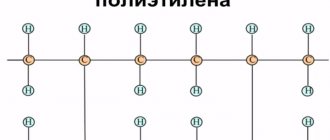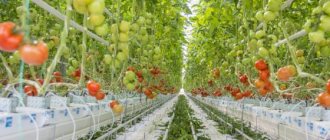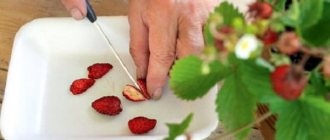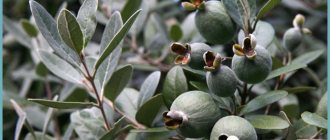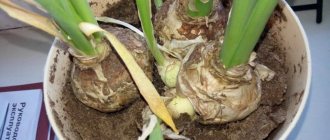Polyethylene film is a universal moisture-proof insulating material that is actively used in the household. It is used, for example, for constructing greenhouses, for waterproofing surfaces, as a covering layer to protect objects, products, furniture from atmospheric moisture and pollution. In stores you can buy film of different thicknesses, lengths and widths, but this is not always enough to make the desired design. There is no point in sewing polyethylene fabric, but how to weld and glue plastic film at home is useful information for every thrifty owner.
Polyethylene and its properties
Polyethylene is a very common material with many excellent properties. It is used for insulation, for packaging, for protection from moisture, is an excellent electrical insulator, absorbs the most dangerous type of radiation - neutrons and is therefore used in protection against them, and is completely chemically resistant. This latter sometimes turns from an advantage into a disadvantage. How to glue polyethylene? Gluing is a chemical and a little electrical process, oddly enough. The molecules of the substances being glued are attracted to each other due to the difference in their electrical charges.
That is, there must be an adhesive in nature (and on the market) that adheres well to polyethylene, and when hardened, firmly holds the glued parts. So, the problem is that gluing polyethylene is very difficult. Its molecules are electrically very “balanced”, hence the extraordinary chemical resistance of the material. And a reluctance to stick to anything. However, the industry has found something to glue polyethylene with. True, not all of this is suitable for home, but some may come in handy. Here are the suitable methods, selected according to the resulting strength rating:
- Welding polyethylene
- Weicon Easy-Mix PE-PP Adhesive
- Epoxy glue plus oxidizing agent
We will consider these three methods further.
How to glue greenhouse film
To understand how to glue a film for a greenhouse, you need to distinguish what material is used for the structure and what properties it has. The choice of tool, the heating time of the edge and other nuances of soldering the artificial fabric depend on this, which should result in a uniform, even seam without holes or traces of thermal deformation.
Different types of film are used in the construction of the greenhouse:
- Polyethylene film is a non-flammable polymer that begins to melt at a temperature of +110...+130 degrees. Moreover, after cooling, it does not change its properties, remaining impenetrable to steam, gases, moisture and other substances.
- Reinforced polyethylene film - durable and resistant to any physical impact. The melting point is +120...+130 degrees Celsius. Structurally, it is a mesh frame with square cells (the thread material is fiberglass, lavsan, polypropylene, etc.), covered on both sides with polyethylene film. Unlike ordinary polyethylene, it has a rough surface.
How to combine plastic film for different types of greenhouses?
The main rule: you can only solder the same materials, for example polyethylene with polyethylene. Rough surfaces and edges made of different materials must be glued together using glue.
The technology for joining polyethylene is selected depending on the properties of the material. In the next subsection you will learn how to solder polyethylene film for a greenhouse at home.
Welding polyethylene
The strongest seam is obtained when welding polyethylene. If done correctly. The fact is that polyethylene is hot molded, usually under very high pressure, which reaches hundreds of kilograms per square centimeter. And when it is reheated at atmospheric pressure until it melts, it tends to shrink, a little, but this is enough to make welding difficult. Two types of welding can be distinguished: film welding and thick polyethylene welding (canisters, pipes, etc.)
To weld the film, heated objects or a special apparatus for gluing polyethylene, or more precisely, welding, are used. It works like this: both layers of film are pulled along a heated wedge, and then immediately welded with a pair of compressed rollers. With the correct selection of temperature and pressure of the rollers, an excellent result is obtained - complete sealing of the seam.
But with a little practice, you can learn how to glue polyethylene even with an electric soldering iron or iron through paper, so as not to spoil its sole. The clean edges of the film are placed on top of each other and driven through the paper with the edge of the sole of a heated iron.
A soldering iron with a clean tip, if turned on through the voltage regulator, welds the seam even better, and no paper is needed. You can also make a clamp on the tip with a small nozzle of a convenient shape made of metal. Then the tip can be used for its intended purpose, and the polyethylene will not be stained with solder or carbon deposits from flux.
Gluing thick polyethylene is more difficult and requires good skill. The best heating method: a portable gas burner (it’s convenient to use), or a hair dryer with a nozzle for a narrow jet of +250°C.
The procedure could be as follows:
- Thoroughly clean and dry surfaces before welding.
- Prepare polyethylene filler for the seam. It is best to take a narrow piece of the same material.
- Heat the edges of the seam until melting begins and let them “settle” a little. But don't get carried away with this process.
- Start introducing the additive (see point 2), fusing it evenly into both sides of the seam to a thickness equal to the material.
- Allow the seam to cool completely.
The same method is applicable when deciding what to use for gluing foamed polyethylene. The surface of foamed polyethylene is not very conducive to bonding, and it is better to weld it carefully.
For another method of welding thick polyethylene, see the video:
How to secure the film to the greenhouse arches using clamps and clips
Clips are used for fastening films to greenhouses, the frame of which is made of metal-plastic pipes or fittings. The pipe diameter can be 25, 32 or 60 mm. It is not very convenient to stretch the film onto the frame, but they are attached very easily using special clamps. They are put on the pipe, grab the plastic film and press it against the arches.
Similar clips can be found at any hardware store. But if they are not available or it is not possible to purchase them, you can make such clamps yourself. To do this, you need to take a plastic pipe and cut pieces 4-5 cm long. Then you need to cut off the side of each tube - the cut should be of such a size that it can be attached to the arc of the greenhouse.
It is important to sharpen the edges of the tubes so that the sharp corners do not tear the film when attaching.
In a similar way, you can make clamps from a rubber hose, but rubber tends to dry out, so this method is short-lived.
You can also use large stationery binders to attach the film to the frame. They can be attached to the frame if the diameter of the pipes allows.
Gluing with acrylate glue with filler
The best glue is Weicon Easy-Mix PE-PP. It is specially designed for materials with weak adhesion. Most liquids “stick” to polyethylene very poorly and are simply squeezed out from the point of contact between the surfaces.
But this glue contains the addition of tiny glass beads, which prevents the glue from leaving the gluing area, forming a gap of the required thickness. Therefore, the gluing surface is sufficient and the glue, when hardened, holds the surfaces firmly together. It’s hard to find anything better than gluing polyethylene.
Surfaces must be thoroughly degreased and dried before gluing. Glue can only be supplied from a branded packaging mixer. The best temperature for performing work is +21…+23°С. Liquid glue is good for no more than 2-3 minutes. After applying the layer, you must immediately join the surfaces. Full readiness of the seam (maximum mechanical strength) for polyethylene will be achieved in a few hours (4-5 according to the experience of those who worked with glue). The adhesive joint is cured at a temperature from +15 to +70°C.
Briefly about the main thing
By understanding how and what to cover a greenhouse with, you can create shelters that can last in the garden for several years. Experts advise cutting it out right away and keeping a spare case on hand. It will help, in case of damage to the film, to replace it in time and prevent the death of plants. The method of fastening the covering material is selected taking into account what the frame is made of.
A little more attention!
What do you think - which method of attaching film to a greenhouse is more reliable? Maybe it is better to use polycarbonate or glass to cover the greenhouse?
Bonding with epoxy glue
This is the most accessible method, if we talk specifically about gluing and not welding. Before gluing polyethylene, you need to prepare the surfaces.
Epoxy glue is not a glue for gluing polyethylene, but, nevertheless, phenol-formaldehyde resin has very decent adhesion to the surface of polyethylene. In this case, you need to act like this:
- Roughen the surfaces with emery cloth, then degrease and dry.
- Treat both surfaces with a 15-25% solution of chromic anhydride or 20-30% potassium dichromate. (Caution, caustic substances and dangerous carcinogens!) You can take another strong oxidizing agent: a strong solution of potassium permanganate. It is not much less effective, but is much safer. After treatment, dry the surfaces again.
- Prepare epoxy glue according to instructions.
- Apply a thin layer of glue to both surfaces and join.
- Maintain at a temperature of +30...+45°C for several hours, but it is better to keep for a day until ready.
In case of high strength requirements, welding should definitely be preferred. If welding is also accompanied by keeping the seam warm at about 70°C for several hours with slow cooling, then the seam will have a slight fragility. Rapid cooling of the seam makes it brittle, especially in cold conditions.
Acrylate adhesive with filler does not require mechanical preparation of the surface, except for unconditional cleaning and degreasing, which must always be done before gluing. You can even try to experiment with other acrylate adhesives by adding an additive in the form of crushed chalk or cement. It is possible that you will be able to get a high-quality and very inexpensive recipe.
Epoxy glue is the most difficult to use, and the strength here is not the highest. But in extreme cases, this may be a way out.
Film, polycarbonate or glass: which is better?
Even at the initial stage, it is important to decide whether it is better to cover the greenhouse with a film or a covering material of a denser texture. The choice becomes much easier if priorities are set correctly. When the greenhouse is assembled in the spring for growing seedlings, you can get by with film. It is the cheapest covering material, which allows you to assemble a shelter in a couple of hours. One person can do the job.
In winter, the film is removed, the ground is exposed, covered with snow, and saturated with moisture. This has a beneficial effect on the ecosystem of the site. In closed greenhouses, in the absence of heating, the soil freezes to the deepest layer, causing the death of microorganisms, the activity of which improves the quality of the soil.
If you plan to use the greenhouse during frosts, you can cover it with polycarbonate sheets. This is a durable material, easily withstands wind and snow loads, and reliably protects plantings from weather influences.
Polycarbonate greenhouse in winter Source alyanssd.ru
It is chemically inert, so it is allowed to use the entire range of chemical fertilizers inside such a greenhouse. The special structure of the material provides high thermal insulation characteristics, but it transmits little light, so the inside of the greenhouse has to carefully consider artificial lighting and then increase the cost of paying for electricity.
In the hot season, there is a need to close the shelter from bright daylight. It greatly heats up the temperature inside the greenhouse, which has a bad effect on plant growth. Anyone who understands how to cover a polycarbonate greenhouse from the sun can easily cope with the problem of preserving the harvest. Typically, reflective film is used in such situations. It is laid directly on top of the building frame.
When the question is what to cover a greenhouse with other than polycarbonate, glass is usually chosen. This is the most expensive way to organize the cultivation of plants during the cold period, but the most effective. Usually it is used mainly for organizing year-round cultivation of plants.
Greenhouse covered with glass Source zimsad-master.ru
Its choice is considered inappropriate from an economic point of view if the greenhouse “operates” periodically, from time to time. In situations where the shelter is used from May to October, it is better to cover it with film. This design has its own characteristics, understanding them allows you to extract maximum benefit.
Preparation for gluing
Before you begin gluing surfaces, you must carefully prepare them. Otherwise, the result will be negative and even the best glue will not hold parts of the whole. Preparation consists of several stages: cleaning, degreasing, surface activation.
Cleaning
Cleaning can be carried out with any detergents. Its essence is to get rid of severe contamination of the surface of the film or polyethylene. If the surface cannot be washed, then you can use physical cleaning with abrasive agents.
Degreasing
After the surface of the material has been completely cleaned of particles of dust and dirt, it must be degreased. The degreasing operation in most cases is carried out with water vapor, wiping the surface with a cloth that is pre-wetted with a solvent.
The process is repeated until the cloth remains clean after being passed over the surface of the material. The method of processing in solvent vapors is also effective.
Degreasing must be carried out in the most thorough manner; in any case, it would not be amiss to rinse, wash the surface with a fresh portion and leave it at that.
However, if more complex methods of surface preparation are used, degreasing in any case is a mandatory first stage of processing.
After degreasing by any means, cleaning compounds or detergent solutions must be used to remove dirt and other inorganic residues.
Surface activation by corona discharge
Surface activation
After degreasing has occurred, it is necessary to activate the surface. For this, it is recommended to use special epoxy compounds.
In some cases, activation is carried out using a gas-discharge lamp. The latter method is not so popular and requires additional equipment.
